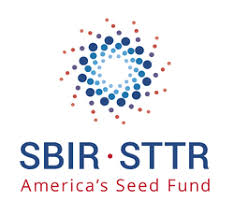- Solutions
- Partners
- Resources
- Blog
- GovCon Source
- GovCon Source Home
- Lean & Agile in the Age of DOGE
- Service Contract Act (SCA)
- DCAA Compliant Accounting
- GovCon Outsourcing & Managed Services
- Government ERP Systems
- Veteran-Owned Small Businesses
- GovCon CyberSecurity
- Graduating 8(a) Program
- SBIRs & Grants
- GovCon Growth Strategies
- GovCon Compliance Audits
- Webinars
- DCAA Compliance
- GovCon Accounting
- Graduating 8(a) Program
- Service Contract Act (SCA)
- GovCon Managed Services
- Government ERP Systems
- GovCon Reviews & Audits
- Cybersecurity Compliance
- Government Grants & Contracts
- Company
Self-Assessment Checklist
Answer a few questions to see if you are correctly and efficiently handling your SBIR grants and contracts.
 Page Summary
Page Summary
SBIR funding can be an excellent source of non-dilutive seed capital for your start-up or funding an innovative technology or product. Applying for SBIR funding involves meeting eligibility criteria, selecting relevant agencies, crafting a comprehensive proposal, registering with SAM and Grants.gov, adhering to agency-specific guidelines, and engaging with program managers for a competitive chance at funding and successful commercialization.
 Applying for Small Business Innovation Research (SBIR) funding can be a complex and competitive process, but it's a great opportunity to further develop and commercialize your innovative technology or product.
Applying for Small Business Innovation Research (SBIR) funding can be a complex and competitive process, but it's a great opportunity to further develop and commercialize your innovative technology or product.
How to Apply for SBIR Grant Funding
-
SBIR Phases and Funding
- Phase I: In this initial phase, small businesses can receive funding to conduct feasibility studies and research the scientific, technical, and commercial potential of their innovative ideas. The goal is to determine the project's viability and establish a proof of concept.
- Phase II: Building upon the results of Phase I, Phase II involves the further development, testing, and refinement of the innovation. Small businesses that successfully completed Phase I are eligible to compete for additional funding in Phase II to support the maturation of their projects. This phase focuses on creating prototypes and demonstrating the commercial potential of the proposed technology.
- Phase III: Unlike the previous phases, Phase III is not directly funded by the SBIR program. Instead, it involves the commercialization of the developed technology with the goal of bringing the innovation to the market. During this phase, small businesses are expected to seek non-SBIR funding from private sector investments, government contracts, or other sources to fully transition their research into a commercially viable product or service.
- Phase I: In this initial phase, small businesses can receive funding to conduct feasibility studies and research the scientific, technical, and commercial potential of their innovative ideas. The goal is to determine the project's viability and establish a proof of concept.
-
Review Eligibility Requirements for SBIR
Grants Ensure your business meets the eligibility criteria for SBIR funding. Typically, you must be a small business as defined by the Small Business Administration (SBA), and your research project must align with the mission and interests of the funding agency (e.g., NIH, NASA, NSF, DoD, DoE, etc.). -
Identify Relevant Funding Agencies Determine
which federal agencies or departments offer SBIR funding opportunities that align with your project's goals and objectives. Each agency has its own solicitation and application process. -
Develop a Comprehensive Proposal
Prepare a well-structured and compelling research proposal that addresses the specific requirements outlined in the agency's solicitation. Be sure to include:- A clear and concise project description.
- A statement of the problem or need you're addressing.
- Your proposed solution or innovation.
- Objectives and milestones for the project.
- A detailed work plan and timeline.
- Information on your team's qualifications and expertise.
- A budget and budget justification.
- Commercialization plans and potential impacts.
- Compliance with agency-specific guidelines.
-
Ensure your business is registered in the System for Award Management (SAM) and Grants.gov, as these are required for submitting your SBIR grant proposal. Register with SAM and Grants.gov
Register with SAM and Grants.gov -
Find and Follow Agency-Specific Guidelines
Carefully read and follow the agency's SBIR solicitation guidelines. Each agency may have unique requirements, evaluation criteria, and deadlines. -
Contact the Program Manager
Reach out to the program manager at the funding agency for guidance and clarification on the solicitation and your proposal. Building a relationship with the program manager can be beneficial. -
Prepare and Submit Your Proposal
- Prepare your proposal according to the agency's guidelines.
- Submit your proposal through the agency's online submission portal, which is usually managed through Grants.gov.
-
Review and Evaluation
Your proposal will undergo a rigorous peer review process, where experts in the field will evaluate its scientific and technical merit, innovation, and commercial potential. -
Await Funding Decision
The agency will notify you of the funding decision. If your proposal is selected, you will receive a SBIR award. -
Execute the Project
If awarded, you'll need to execute your SBIR project according to the proposed timeline and budget. Be sure to maintain proper documentation and compliance with agency requirements. -
Commercialization
Work on commercializing your technology or product as outlined in your proposal. Many agencies expect SBIR projects to have a clear path to marketplace commercialization.
Learn more about SBIR Commercialization
Remember that the SBIR application process can be highly competitive, so it's essential to craft a compelling proposal and align your project with the specific priorities of the funding agency. Additionally, seek assistance from resources like Small Business Development Centers (SBDCs) or consulting services that specialize in SBIR proposals to increase your chances of success.
Other posts you might be interested in
View All Posts
12 min read
| October 15, 2025
AtWork & Paychex: Simplifying Business Operations Together
Read More
5 min read
| August 5, 2025
Now Is the Time to Replace QuickBooks, Unanet, and Deltek
Read More
4 min read
| August 4, 2025
